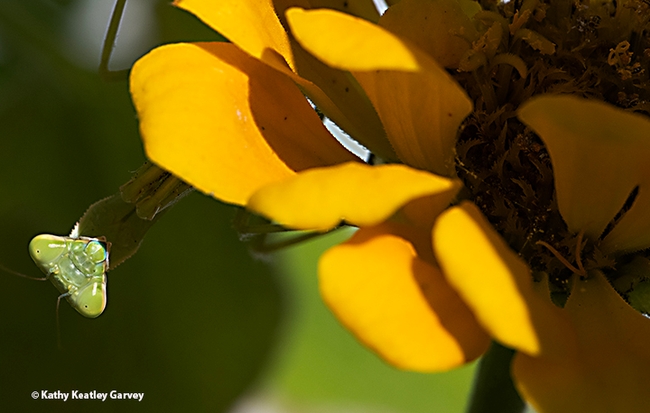- Author: Kathy Keatley Garvey
So here's this female praying mantis, Stagmomantis limbata, camouflaged on a narrow-leaf milkweed, Asclepias fasciculari, in a Vacaville garden.
If she thinks she's going to ambush a monarch, she has another think coming. No monarchs in the garden.
If she thinks she's going to ambush a bee, no way. No bees in the garden early this morning.
If she thinks she's going to munch on oleander aphids (which she probably won't), there are plenty.
Fact is, she doesn't "think" like we do. She will wait, quite patiently, to ambush prey. Even in the pending triple temperatures of the day.
When the heat becomes unbearable, she will slip beneath the leaves, but still maintain a lookout.
Ms. Mantis will be patient. She is always patient.
Patience is her middle name (Stagmomantis "Patience" limbata) and prey is her game.
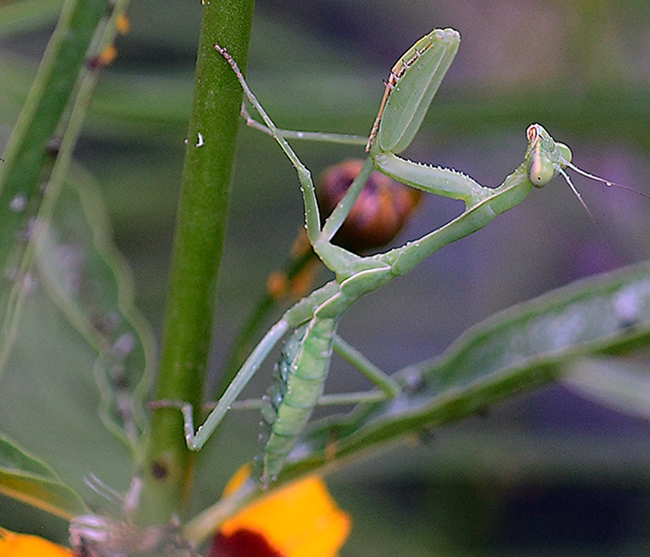
- Author: Kathy Keatley Garvey
When you venture into your pollinator garden, look for the beauty, color, diversity and the intensity that surrounds you. You will be astounded.
- A honey bee nectaring on lavender in a soft-pastel scenario.
- A katydid nymph crawling (backlit) on a blanketflower, Gaillardia.
- A Gulf Fritillary butterfly, Agraulis vanillae, nectaring on Lantana
- A praying mantis, Stagmomantis limbata, perched on a Cosmo
- A yellow-faced bumble bee, Bombus vosnesenskii, exiting a lavender patch.
You're the gardener, and you'll be using your garden tools...pruning shears, spade, trowel, garden fork, hoe, hand rake...
But another good garden tool--and an indispensable one--is the camera. You just never know when a buddy shows up in the garden...
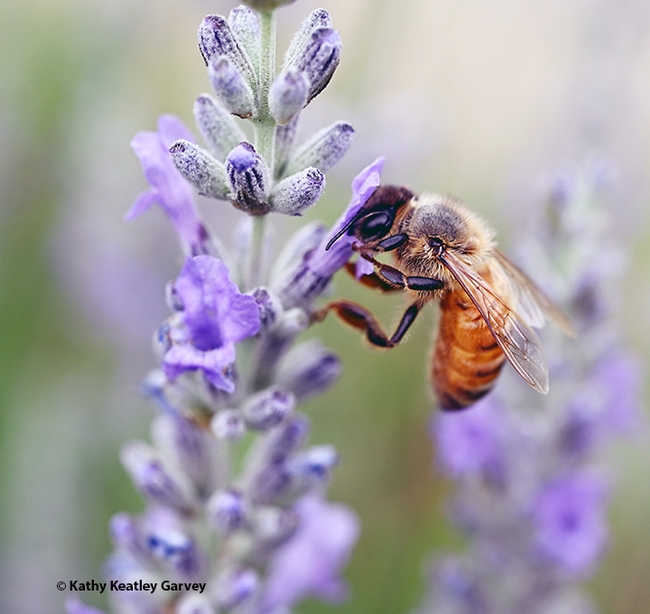
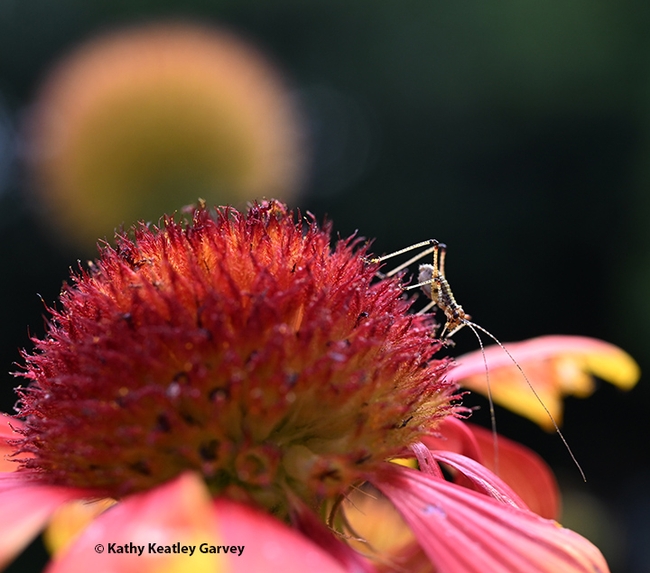

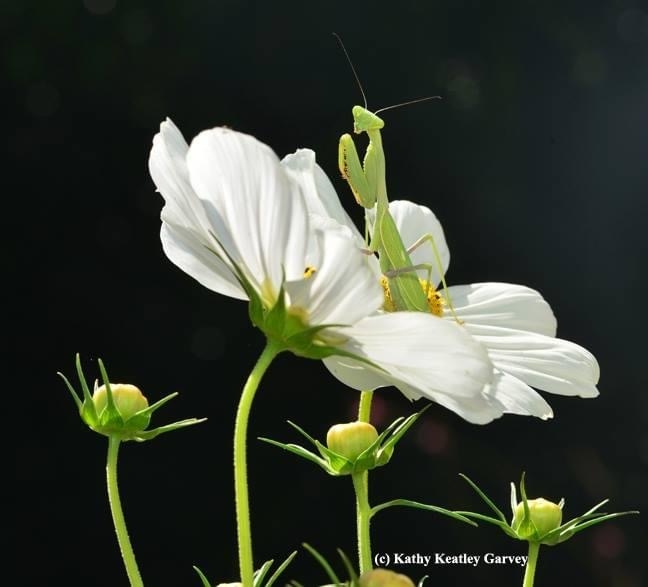
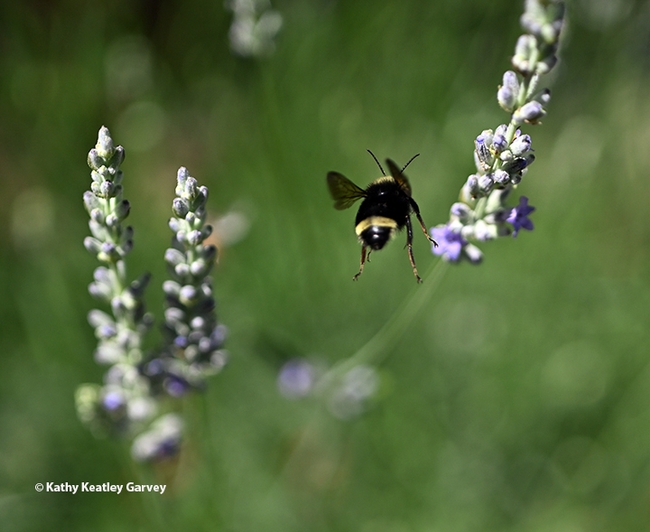
- Author: Kathy Keatley Garvey
So here's this immature praying mantis, a Stagmomantis limbata, perched on a narrow-leafed milkweed, Asclepias fascicularis, in a Vacaville pollinator garden.
She's camouflaged quite well. She's as green and thin as the leaves.
Me: "Hey, Ms. Mantis, whatcha doin'?"
Ms. Mantis: "Just occupying a spot on this milkweed. Catching some sun, is all."
Me: "Hoping to catch a monarch, Ms. Mantis?"
Ms. Mantis: "No, no, of course not. I would never, ever, catch a monarch! You know me!"
Me: "I do know you. Promise you won't nail a monarch?"
Ms. Mantis: "Sorry, I can't promise if I'm hungry. Now, go away, you're disrupting my choice of menu items."
Me: "How about a stink bug or a lygus bug?"
Ms. Mantis: "I don't take menu orders. What do you think I am? DoorDash? Go away!"
Me: "Hey, I see a katydid nymph over there!"
Ms. Mantis: "Where, where? How far?"
Me: (Pointing to a lower leaf) "Over there!"
With that, Ms. Mantis slipped off the blossom, never to be seen again.
Epilogue: The California scrub jays noisily nesting in the cherry laurel hedges may have snagged a Stagmomantis mantis meal.
They don't take orders, either.
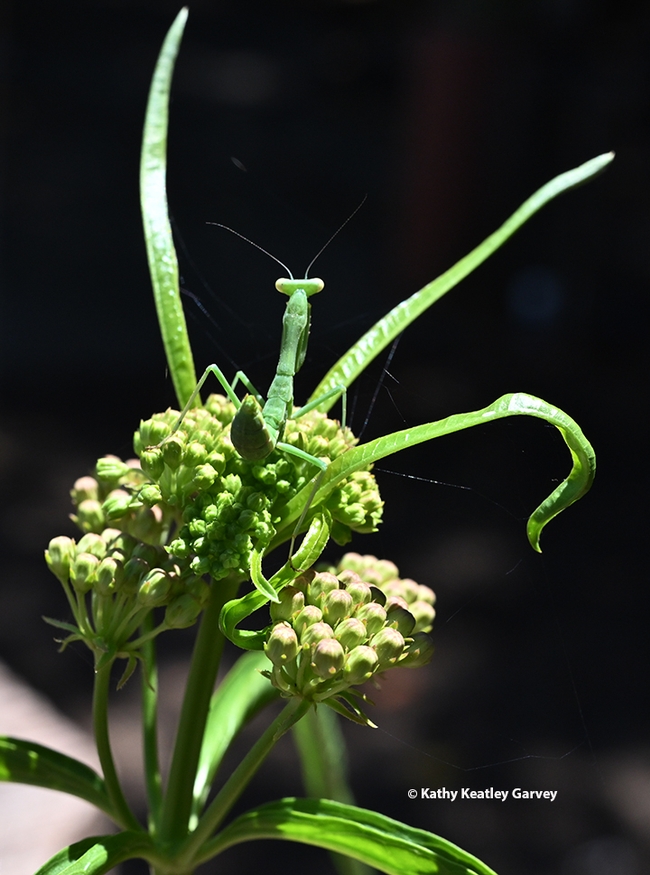
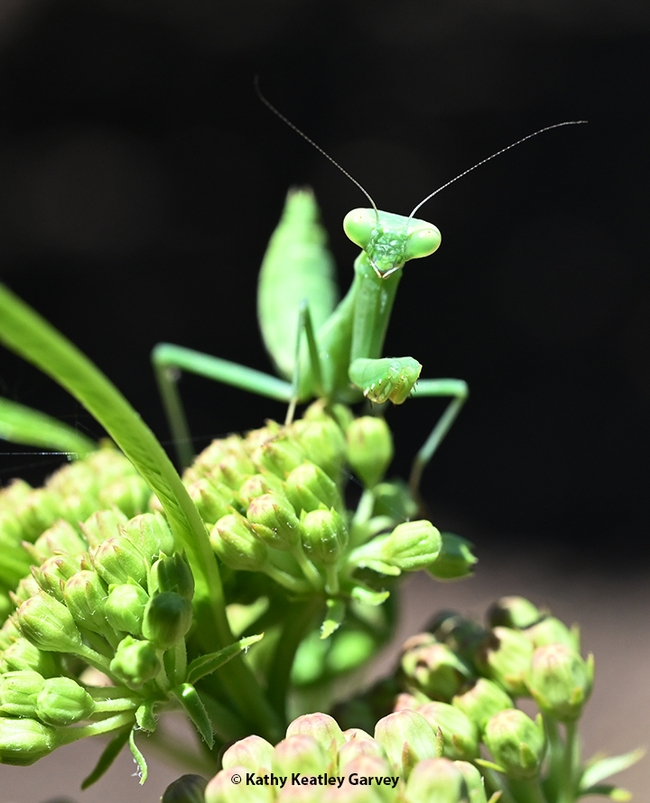
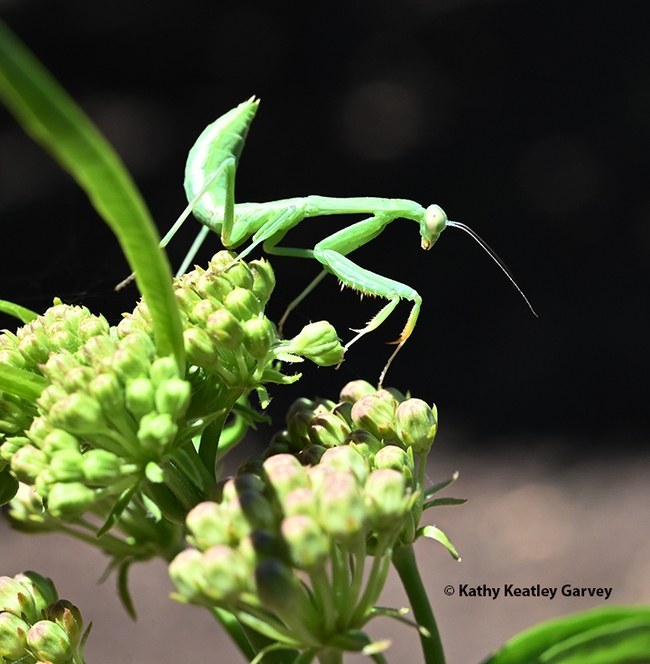
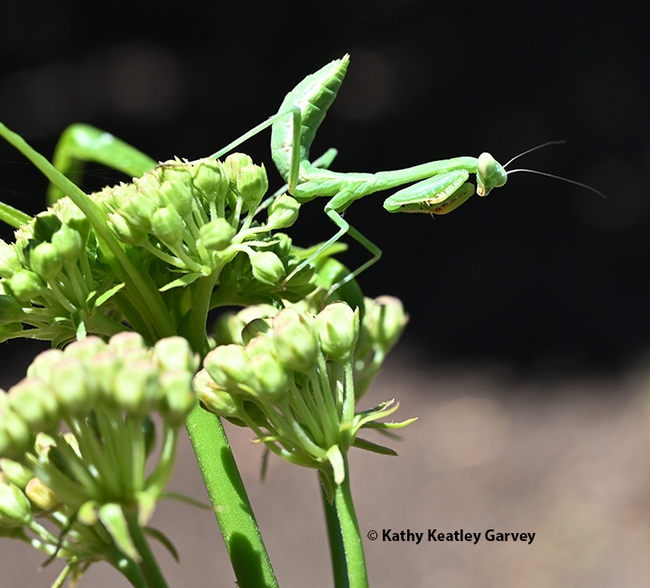
- Author: Kathy Keatley Garvey
If you've been pruning bushes or trees, check to see if a praying mantis egg case (ootheca) is attached to a limb.
If you do, you're in luck!
A mantis deposits her egg case in late summer or fall, and usually on twigs, stems, a wooden stake or fence slat, but sometimes even on a clothespin.
The nymphs emerge in early spring.
The hard egg capsule protects the future offspring from "microorganisms, parasitoids, predators, and weather," Wikipedia tells us. The ootheca "maintains a stable water balance through variation in its surface, as it is porous in dry climates to protect against desiccation, and smooth in wet climates to protect against oversaturation. Its composition and appearance vary depending on species and environment."
Meanwhile we've been watching a neighbor's gift: an ootheca attached to redbud twig. With any luck, we expect the nymphs to emerge around April 9, weather permitting.
Back in 2022--April 9th to be exact--we were delighted to see some 150 nymphs emerge from the clothespin just a'hanging on the line. Of course, the sisters and brothers ate one another. Only a handful survived.
It's survival of the fittest. Or the fleetist. Or maybe just luck?
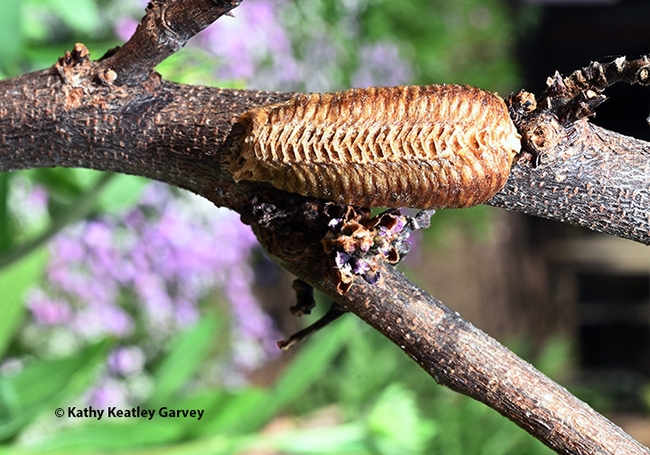
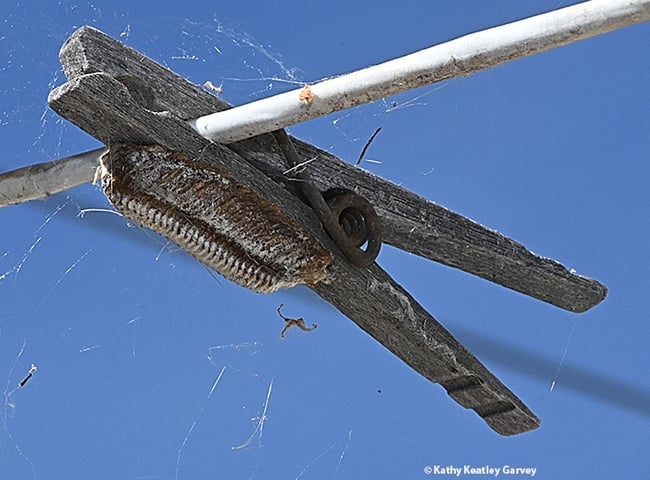
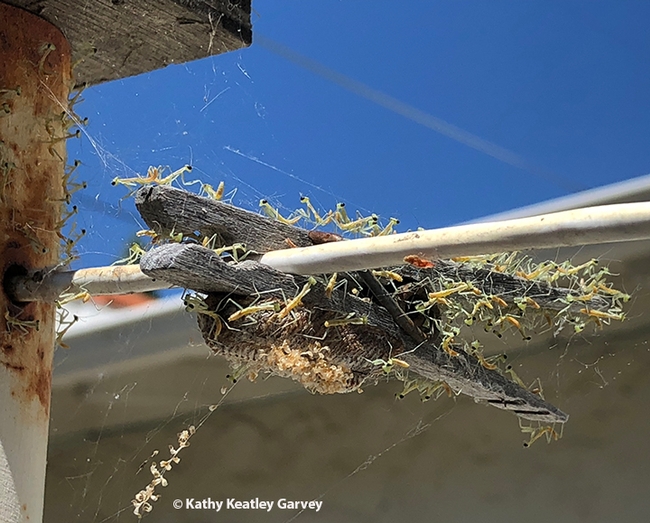
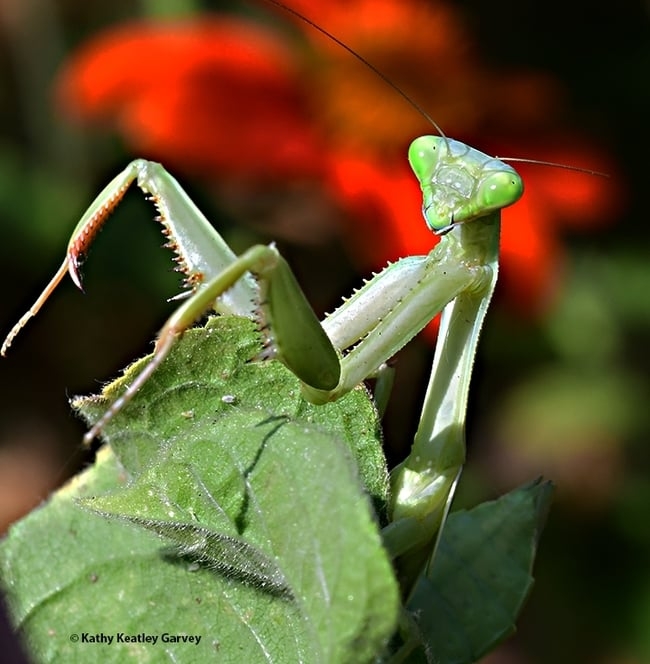
- Author: Kathy Keatley Garvey
Date: Sept. 9, 2023
Location: A flower bed in Vacaville, Calif.
Mantis: “Hi, it's me, your favorite praying mantis! I just popped in to say hello!”
Photographer: “Well, hello there, Ms. Stagmomantis limbata, but I think you have ulterior motives! You're not here to greet me and tell me to have a nice day, are you?”
Mantis: “What makes ya think that?”
Photographer: “Because you're hungry and you're an ambush predator and you're waiting to nail an unsuspecting bee or butterfly. But that's OK. Every living thing in this garden eats.”
Mantis: “Ya think?”
Photographer: “Sometimes.”
Mantis: “Well, tell me how I look.”
Photographer: “You look like your crept out of the shadows and your head is spinning in space and it somehow got detached from your body. I could ask you what motivational and existential predicaments are playing directive roles on your current behavior patterns, like I ask all my friends, but I won't. Be well.”
Mantis: “Bee? Where? Where?”
